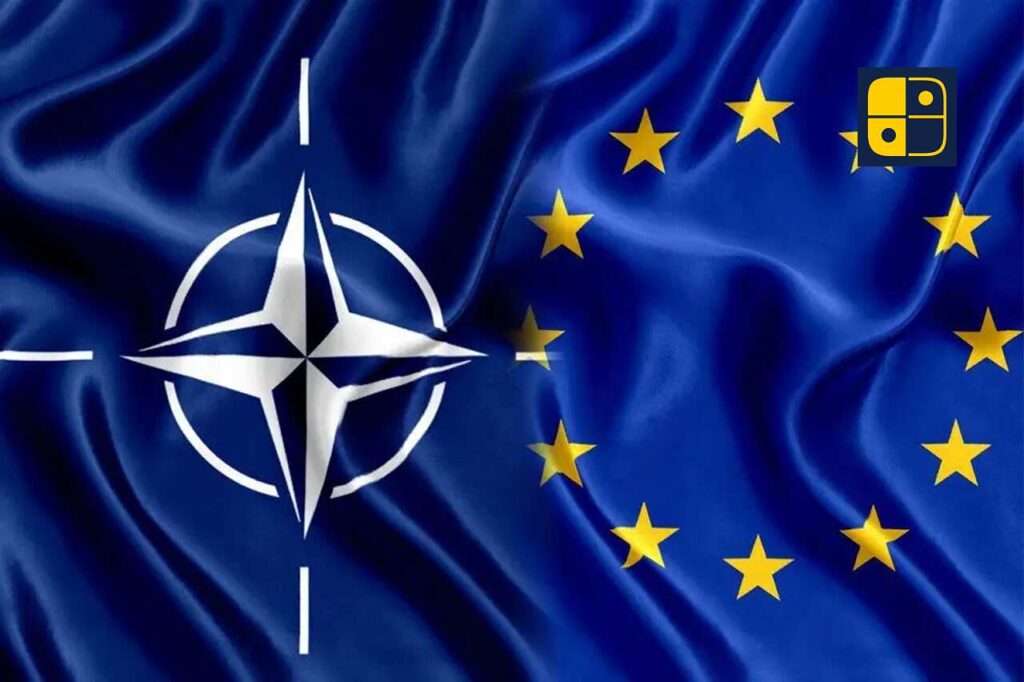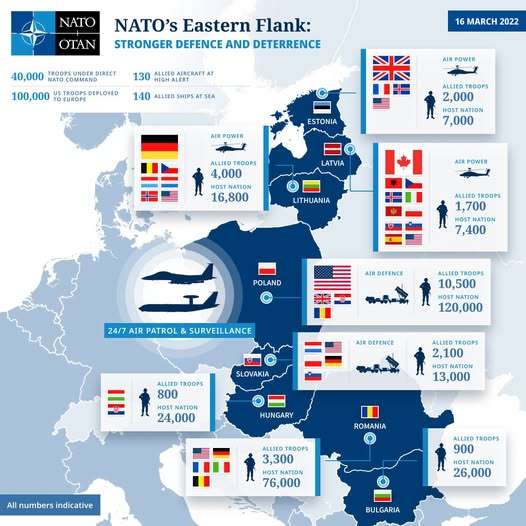When NATO leaders summon and assemble to assess threats to their member states, the public eye usually shifts toward Article 5, the collective defense clause that states an attack against an ally is an attack against all. However, in recent years, Article 4 has emerged as one of the most frequently used strategies for NATO to manage security emergencies across Europe. Although less sensational than a call to Article 5, Article 4 is arguably more relevant to NATO’s everyday actions in relation to evolving threats, particularly given the way Russia’s war in Ukraine increasingly extends into the airspace and borders of the alliance.
What is Article 4 of NATO?
Article 4 of the North Atlantic Treaty explains that “the Parties will consult together whenever, in the opinion of any of them, the territorial integrity, political independence, or security of any of the Parties is threatened.” Practically speaking, this means any member may request consultation if it believes it is threatened. Unlike Article 5, Article 4 does not immediately put the North Atlantic Council (NAC) into motion for military action or decisions; rather, Article 4 can lead to various options, including statements as a coalition, plans for a coalition, troop deployments into a coalition, or strengthened deterrence
Since NATO’s founding in 1949, Article 4 has been invoked over 10 times, mostly by states along NATO’s eastern front and southern flank.
Recent Invocations & Security Contexts
Poland (2022 & 2025): Poland recalled Article 4 following Russia’s full-scale invasion of Ukraine in February 2022. In making the case for consultations, Warsaw argued that Moscow’s aggression to Ukraine endangered NATO’s eastern flank, noting both its land, and sea borders, Poland also has several cells of military hostility. More recently, Poland flagged homeland threats from Russian drone incursions, after at least three UAV incidences were downed in September 2025.
Romania: On September 14, 2025, Romania assigned blame to a Russian drone for an airspace incursion while patrolling the international boundary with F-16 jets, various reports indicated. While Romania gave urgency to rising tensions, claimed the drone did not violate compromised populated areas, nonetheless raised the alarm and subsequently led to discussions around further duties at an Article 4 consultation moving forward.
Turkey (2012, 2020): Turkey has invoked Article 4 most frequently. In their case, Turkey’s justified reasons to call a consultation meeting back in 2012 after Syria downed a Turkish jet to protect civilian airspace. Following that, NATO initiated support for Turkey, and deployed Patriots missile batteries along several of Turkey’s borders. Turkey also mentioned Article 4 in March of 2020, following increasing tensions in Idlib, Syria.
Conclusively, these infrequent examples demonstrate that Article 4 operates under NATO’s “early warning and risk management mechanism”, allowing states participating in NATO to convert security anxieties into coalescing responses, before a crisis erupts.
The Relevance of Article 4
The incident involving drones entering Poland and Romania recently shows an increasing prospect that Russia’s war in Ukraine could move into NATO territory. While Moscow denies any intention to strike alliance states, any breach of airspace, even by mistake, presents risks for escalation. Article 4 is a forum for de-escalation and coordination of deterrence without a direct move to Article 5.
Article 4 consultations reinforce a sense of political unity. For the front-line states, the Baltics, Poland and Romania, it demonstrates their worries are taken seriously. After Poland invoked Article 4 in 2022, NATO quickly moved to increase its presence on its eastern flank with 40,000 soldiers under NATO command, the largest move in a period since the Cold War.
Article 5, which has a strong self-defense component and appears to require a retaliatory military action, is different than Article 4’s ability to produce a response or operation that can be graduated – intelligence sharing, temporary troop rotation or even operational constraints. This is exceedingly important when in the realm of hybrid wars by the blurring of lines between cyber, drones, or (dis)information attacks and where these acts lie in war and peace.
Article 4 and NATO Security
In 2022, NATO has been taking important steps, expanding an Enhanced Forward Presence to eight battlegroups along eastern Europe (if you include Greece as Most Defensively Eastern place in the Alliance). There are now more than 10,000 NATO troops stationed in Poland, the Baltic states, Romania, Slovakia, and Hungary. Air policing has also increased, as NATO jets were scrambled 370 times in 2022 to intercept Russian aircraft. Increased threats in recent years of Russian incursions (including drone incursions) near Poland and Romania have been accompanied by increased military readiness. These increased threats have also resulted in increased defense spending among NATO nations, where 23 out of 32 NATO nations will reach the defense spending level of 2% of GDP in 2025 versus just nine in 2015. Article 4 consultations with NATO as an advanced formal consultative, and sometimes decision-making process have taken shape alongside military readiness and increased defense spending, along with economic and diplomatic actions in the case of the EU’s most severe sanction package in 2022 to cut Russian oil imports by 90%.
Risk and Limitations
While Article 4 is a vital tool, it has significant dangers and limitations. Its frequent use could diminish its political value, as Western European members have been reluctant to risk getting pulled openly too far into Eastern European affairs. The absence of direct red lines, meanwhile, tempts Russia to probe NATO with repeated low-level provocation, such as a recent series of drone incursions, confident that talks will stop short of shifting to Article 5. Furthermore, there is internal alliance politics, as divergent opinions on how firm these responses must be can displace deterrence; for example, Turkey’s 2020 request during Syria conflict revealed whether enlisting NATO support might incur a commitment on the part of some allies. Nevertheless, looking forward, Article 4 remains an essential compass for collective European security; it reassures the smaller, frontline states that they are not alone, while larger countries such as the U.S., Germany, and France, have way to calibrate escalation in the conversations and not prematurely commit to a war.
Article 4 is, in many respects, the “quiet workhorse” of NATO, less dramatic than Article 5, but also more often invoked and perhaps more valuable in keeping conflict from spiraling beyond our control. Its value will only increase as Europe enters into a new era marked by gray-zone threats, contested borders, and great-power rivalry.


